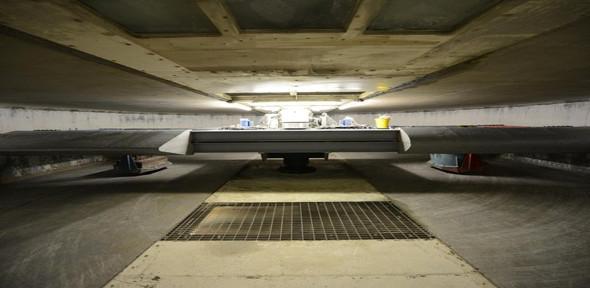
Real-time transnational access will enable researchers to participate in experiments all over Europe without leaving the lab. In an underground chamber at the Department's Schofield Centre lies the UK’s largest centrifuge and the world’s most productive machine for observing and measuring geotechnical phenomena. The Turner centrifuge travels at speeds of 200 miles per hour and creates 150 times the earth’s gravity. The 10 metre diameter centrifuge is being used to model loads and pressures experienced during earthquakes, and to simulate tunnels and wind farms.
Now, thanks to funding from the European Commission (EC), experiments carried out in Cambridge will soon be ‘talking’ to experiments happening at the same time at sites across Europe. Data will be fed in real-time across the internet to other sites participating in the project, allowing multiple institutions to take part in a common experiment. In all, 23 institutions, each with its own specialist equipment, are involved in research aimed at answering questions about the behaviour of shallow building foundations in earthquakes.
The Seismic Engineering Research Infrastructures for European Synergies (SERIES) project is being coordinated by Dr Gopal Madabhushi and Dr Stuart Haigh. ‘European seismic engineering research has tended to suffer from extreme fragmentation of research infrastructures and limited access to equipment between countries,’ explained Dr Madabhushi. ‘SERIES answers this need by enabling the key actors in Europe’s seismic engineering research, including three industrial beneficiaries, to coordinate remote research activities in real-time.’
The project builds on the success of a smaller-scale initiative between the UK’s three leading earthquake engineering laboratories at the Universities of Cambridge, Oxford and Bristol with funding from the Engineering and Physical Sciences Research Council (EPSRC). This showed the benefits of creating real-time, grid-based communications to provide access to experimental facilities and data.
For SERIES, the efficiency and cost-effectiveness of resource usage is considerable: it’s been estimated that the annual cost to the EC of the four-year programme is less than 1.35% of the total present value (€190 million) of the material resources to be shared by the 23 participants.
For more information, please contact Dr Gopal Madabhushi (mspg1@eng.cam.ac.uk) or visit the SERIES website (www.series.upatras.gr/).
This article is reproduced from Research Horizons the University of Cambridge research magazine www.research-horizons.cam.ac.uk

